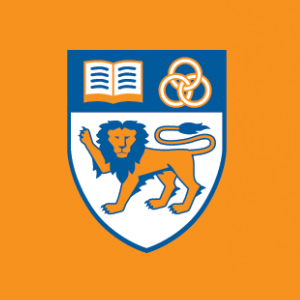Journals Reviews Patents Presentations Awards Media Coverage
Phase diagram for infinite layer nickel superconductors
 NUS physicists have developed a method to induce the transition of a rare-earth nickelate from their native perovskite form to infinite-layer structures. This allowed them to build a complete phase diagram of this nickelate superconductor. To achieve this, Prof ARIANDO’s group developed a topotactic reduction technique to transform thin films of rare-earth nickelate (NdNiO2) from its usual perovskite crystalline form to a new doped structural form, known as infinite-layer structures. In this material, superconductivity arises when the nickelate compound is doped with strontium (Sr) impurities and it exists in its infinite-layer structural form. The technique allowed the research team to study the superconductivity as a function of doping. They constructed the phase diagram for this material system, and found the presence of a superconducting dome region (doping dependent Tc) and weakly insulating regime by the side of the dome (See Figure). [more]
NUS physicists have developed a method to induce the transition of a rare-earth nickelate from their native perovskite form to infinite-layer structures. This allowed them to build a complete phase diagram of this nickelate superconductor. To achieve this, Prof ARIANDO’s group developed a topotactic reduction technique to transform thin films of rare-earth nickelate (NdNiO2) from its usual perovskite crystalline form to a new doped structural form, known as infinite-layer structures. In this material, superconductivity arises when the nickelate compound is doped with strontium (Sr) impurities and it exists in its infinite-layer structural form. The technique allowed the research team to study the superconductivity as a function of doping. They constructed the phase diagram for this material system, and found the presence of a superconducting dome region (doping dependent Tc) and weakly insulating regime by the side of the dome (See Figure). [more]
Room-Temperature Giant Magnetoresistance in Terraced graphene
 NUS physicists have developed a sensitive two-dimensional (2-D) magnetic field sensor, which can potentially improve the detection of nanoscale magnetic domains for data storage applications. Mr Junxiong HU, a PhD student on the research team said, “The core part of the 2D magnetic sensor is the terraced graphene formed by stacking graphene on an atomically terraced substrate. The process is similar to placing a carpet on a staircase (see figure).” Prof Ariando said, “This technology has the potential for developing the next generation of highly sensitive sensors for the detection of the nanoscale magnetic domains. The single-layer graphene films used for the sensor can be manufactured by batch production for scalability.” The research team has filed a patent for the invention. Following this proof-of-concept study, the researchers plan to optimise the terraced geometry further and adapt it for large-scale production techniques. This will then scale up their experimental outcomes leading to the manufacture of industry-size wafers for commercial use….[more]
NUS physicists have developed a sensitive two-dimensional (2-D) magnetic field sensor, which can potentially improve the detection of nanoscale magnetic domains for data storage applications. Mr Junxiong HU, a PhD student on the research team said, “The core part of the 2D magnetic sensor is the terraced graphene formed by stacking graphene on an atomically terraced substrate. The process is similar to placing a carpet on a staircase (see figure).” Prof Ariando said, “This technology has the potential for developing the next generation of highly sensitive sensors for the detection of the nanoscale magnetic domains. The single-layer graphene films used for the sensor can be manufactured by batch production for scalability.” The research team has filed a patent for the invention. Following this proof-of-concept study, the researchers plan to optimise the terraced geometry further and adapt it for large-scale production techniques. This will then scale up their experimental outcomes leading to the manufacture of industry-size wafers for commercial use….[more]
Phys.org Nanowerk Graphene info Nano
A Novel Way of Transferring Magnetic Information Discovered
A team led by researchers from the National University of Singapore (NUS) has achieved a major breakthrough in magnetic interaction. By adding a special insulator, they make electrons “twirl” their neighboring “dance partners” to transfer magnetic information over a longer range between two thin layers of magnetic materials. This novel technique enables magnetic information to make their way from one magnetic layer to another, synonymous to the encoding and transmission of data …[more]
Phys.org NUS News R&Dmag ScienceDaily
Scientists achieve major breakthrough in thin-film magnetism
Singapore, 14 August 2015 – Magnetism in nanoscale layers only a few tens of atoms thick is one of the foundations of the big data revolution – for example, all the information we download from the internet is stored magnetically on hard disks in server farms dotted across the World. Recent work by a team of scientists working in Singapore, The Netherlands, USA and Ireland, published on 13 August 2015 in the prestigious journal, Science -Science 349, 716 (2015)-, has uncovered a new twist to the story of thin-film magnetism…[more]
Phys.org nanowerk ScienceNewsline Science News AlphaGalileo
Fundamental Advance in Magnetism Announced; Could Increase The World’s Capacity for Big Data
14 August 2015, Dublin: World-first magnetism research has today been published by Professor Michael Coey at the Science Foundation Ireland (SFI) Research Centre, AMBER (the Advanced Materials and BioEngineering Research Centre based at Trinity College Dublin) together with researchers from The Netherlands, Singapore, and the USA in the prestigious journal Science…[more]

